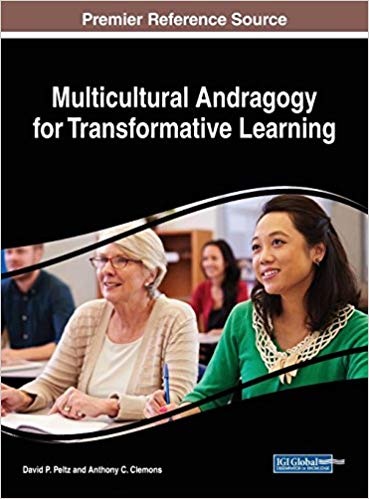multicultural andragogy
Select an item by clicking its checkbox

Multicultural Andragogy for Transformative Learning
Date Reviewed: April 18, 2019
In the Foreword and the Introduction of Multicultural Andragogy for Transformative Learning, the editors lay out the goals and the structure of this multi-author volume. But the reader will not get past the first paragraph of the Forward before encountering one of many punctuation errors that plague the volume. In addition to multiple punctuation errors, some chapters contain so many spelling and phrasing errors that the reader is distracted from engaging with the content. Further, the quality of the research, the quality of the writing, and the author’s ability to support his/her assertions varies widely from chapter to chapter. The result is a collection of chapters that are very loosely connected, with little consistency in how each author engages with the intersection of multiculturalism, andragogy, and transformative learning.
The volume is organized into three sections. The first provides the reader with the foundations for understanding the learning theories of andragogy and transformative learning and how both relate to culture. The second section examines andragogy and practice in a variety of cultural contexts. The final section describes “transformative multicultural andragogy” (xvii) in practice. While some chapters stand out as cogent and applicable, too many other chapters suffer from lack of editorial attention and guidance. The first section of the volume would most benefit from said guidance. Each chapter explains the theory of andragogy; many also describe transformative learning. Andragogy is also explained in detail in the Preface, making much (and in one case, most) of these initial chapters repetitive. Rather than re-explaining these theories, these chapters would be better spent connecting adult learning in various contexts to multiculturalism.
Some of the chapters in sections two and three are valuable as stand-alone articles on their stated topics, but as a whole the chapters do not work together to enlighten the reader about multicultural andragogy as it relates to transformative learning. To be fair, the editors state that they “have set a broad scope for the theme” of exploring the intersection of culture, andragogy, and transformative learning (xx). However, only a few of the authors explore all three of these concepts. When a chapter in a volume is notable for addressing the stated topic of the volume, the scope of the volume is perhaps too broad.
In the Preface and Conclusion, the authors state that “the primary focus of this text has been to elicit the connection between cultural perspectives and adult learning” (xxiv, 270), and in the Conclusion, they propose a new learning model representing the relationship between andragogy, transformation learning, and multiculturalism. What one would hope to learn from this volume is how they interact, not just that they do, so that the model can be tested and reproduced in an adult learning environment. The editors are correct that the relationships between these concepts should be explored and described, and that adult education would benefit from such work. However, Multicultural Andragogy for Transformative Learning lacks the focus and editorial oversight to accomplish that goal.